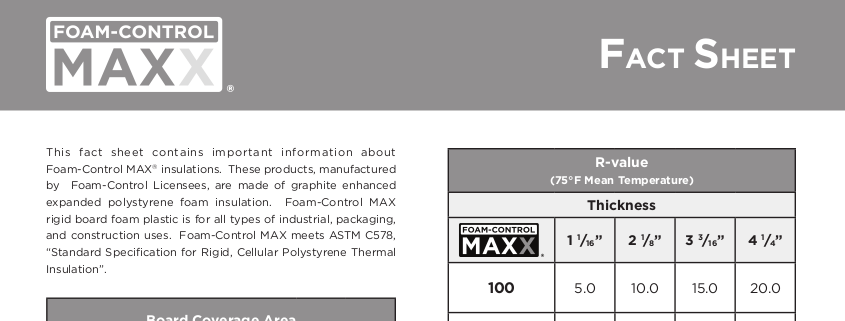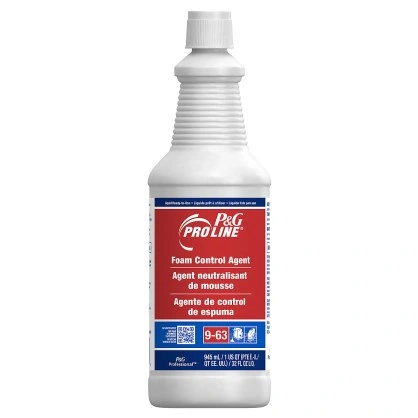Comprehending the Value of Foam Control in Food and Drink Handling
Comprehending the Value of Foam Control in Food and Drink Handling
Blog Article
Efficient Approaches for Achieving Ideal Foam Control in Chemical Production
Efficient foam control is a critical element of chemical production that can substantially impact production performance and product top quality. By understanding the systems of foam development and selecting suitable anti-foaming representatives, suppliers can take proactive steps to alleviate too much foam. Additionally, the implementation of process optimization methods and progressed tracking systems plays an essential duty in maintaining ideal operating problems. Nonetheless, the subtleties of these approaches can vary commonly throughout various applications, raising essential concerns regarding ideal techniques and real-world implementations that merit further exploration.
Comprehending Foam Formation

Surfactants, or surface-active representatives, minimize the surface tension of the fluid, promoting bubble security and advertising foam generation. Furthermore, agitation or blending procedures can improve bubble formation, typically exacerbating foam concerns. The attributes of the liquid tool, including thickness and thickness, more influence foam behavior; as an example, even more viscous liquids have a tendency to trap air better, causing boosted foam stability.
Recognizing these essential aspects of foam development is vital for reliable foam control in chemical production. By recognizing the problems that promote foam development, makers can implement targeted methods to minimize its damaging effects, thus maximizing production processes and making sure regular product quality. This foundational expertise is essential before checking out specific techniques for regulating foam in commercial settings.
Selection of Anti-Foaming Representatives
When picking anti-foaming representatives, it is necessary to take into consideration the specific characteristics of the chemical process and the type of foam being produced (Foam Control). Different variables affect the effectiveness of an anti-foaming agent, including its chemical composition, temperature stability, and compatibility with other process materials
Silicone-based anti-foams are commonly utilized because of their high effectiveness and wide temperature level array. They function by lowering surface area stress, permitting the foam bubbles to integrate and damage even more conveniently. They may not be appropriate for all applications, especially those entailing delicate solutions where silicone contamination is a problem.
On the other hand, non-silicone agents, such as mineral oils or natural compounds, can be helpful in certain circumstances, specifically when silicone residues are unfavorable. These agents often tend to be less reliable at greater temperatures but can provide effective foam control in various other problems.
Additionally, comprehending the foam's origin-- whether it develops from oygenation, agitation, or chemical reactions-- overviews the selection procedure. Checking under actual operating problems is important to guarantee that the picked anti-foaming agent meets the one-of-a-kind demands of the chemical production process effectively.
Refine Optimization Techniques
Reliable foam control is an important facet of enhancing chemical production processes. To boost effectiveness and decrease production prices, producers need to execute targeted procedure optimization techniques. One critical technique entails adjusting mixing rates and configurations. By fine-tuning these specifications, drivers see this page can reduce turbulence, therefore reducing foam development during mixing.
Additionally, controlling temperature and stress within the system can significantly impact foam generation. Reducing the temperature level might lower the volatility of certain elements, causing lowered foam. Keeping optimum stress degrees aids in mitigating excessive gas release, which contributes to foam stability.
Another effective method is the calculated enhancement of anti-foaming representatives at critical stages of the process. Cautious timing and dose can guarantee that these agents successfully reduce foam without interfering with various other procedure specifications.
In addition, including a systematic assessment of resources residential or commercial properties can assist determine naturally frothing compounds, permitting for preemptive measures. Lastly, conducting regular audits and process reviews can reveal inadequacies and locations for renovation, making it possible for continual optimization of foam control approaches.
Surveillance and Control Equipment
Surveillance and control systems play an essential role in keeping ideal foam management throughout the chemical production process. These systems are essential for real-time monitoring and adjustment of foam degrees, guaranteeing that manufacturing effectiveness is taken full advantage of while reducing disturbances triggered by too much foam formation.
Advanced sensing units and instrumentation are employed to identify foam density and elevation, providing important data that notifies control algorithms. This data-driven method permits for the timely application of antifoaming representatives, ensuring that foam degrees remain within acceptable restrictions. By integrating tracking systems with procedure control software application, suppliers can implement automatic responses to foam changes, lowering the need for hands-on treatment and enhancing functional uniformity.
Furthermore, the combination of machine discovering and anticipating analytics into keeping an eye on systems can promote proactive foam management. By examining historic foam information and operational specifications, these systems can anticipate foam generation patterns and advise preemptive steps. Normal calibration and upkeep of tracking devices are important to make sure precision and reliability in foam detection.
Eventually, reliable monitoring and control systems are important for optimizing foam Clicking Here control, advertising safety and security, and improving overall productivity in chemical manufacturing environments.

Study and Best Practices
Real-world applications of tracking and control systems highlight the importance of foam management in chemical manufacturing. A significant study involves a large-scale pharmaceutical producer that carried out an automated foam discovery system. By incorporating real-time monitoring click over here now with predictive analytics, the facility decreased foam-related production downtime by 30%. The data-driven technique permitted prompt treatments, making certain consistent product quality and operational efficiency.
One more exemplary situation comes from a petrochemical company that adopted a combination of antifoam representatives and process optimization strategies. By analyzing foam generation patterns, the organization tailored its antifoam dose, causing a 25% decrease in chemical use and substantial expense financial savings. This targeted method not just lessened foam disturbance however likewise improved the general stability of the production process.

Verdict
In verdict, accomplishing optimal foam control in chemical production demands a detailed method incorporating the choice of suitable anti-foaming representatives, implementation of procedure optimization methods, and the integration of sophisticated tracking systems. Normal audits and training better improve the performance of these methods, fostering a society of continuous enhancement. By dealing with foam development proactively, producers can significantly boost production performance and product top quality, ultimately adding to more sustainable and cost-effective operations.
By comprehending the mechanisms of foam formation and picking suitable anti-foaming representatives, suppliers can take proactive procedures to mitigate extreme foam. The features of the liquid tool, consisting of viscosity and density, more influence foam habits; for instance, more viscous liquids often tend to trap air extra effectively, leading to enhanced foam security.
Recognizing these fundamental elements of foam formation is crucial for effective foam control in chemical manufacturing. By examining historic foam data and operational parameters, these systems can forecast foam generation patterns and suggest preemptive actions. Foam Control. Normal audits of foam control measures ensure that processes stay enhanced, while cultivating a society of aggressive foam management can lead to sustainable improvements across the manufacturing spectrum
Report this page